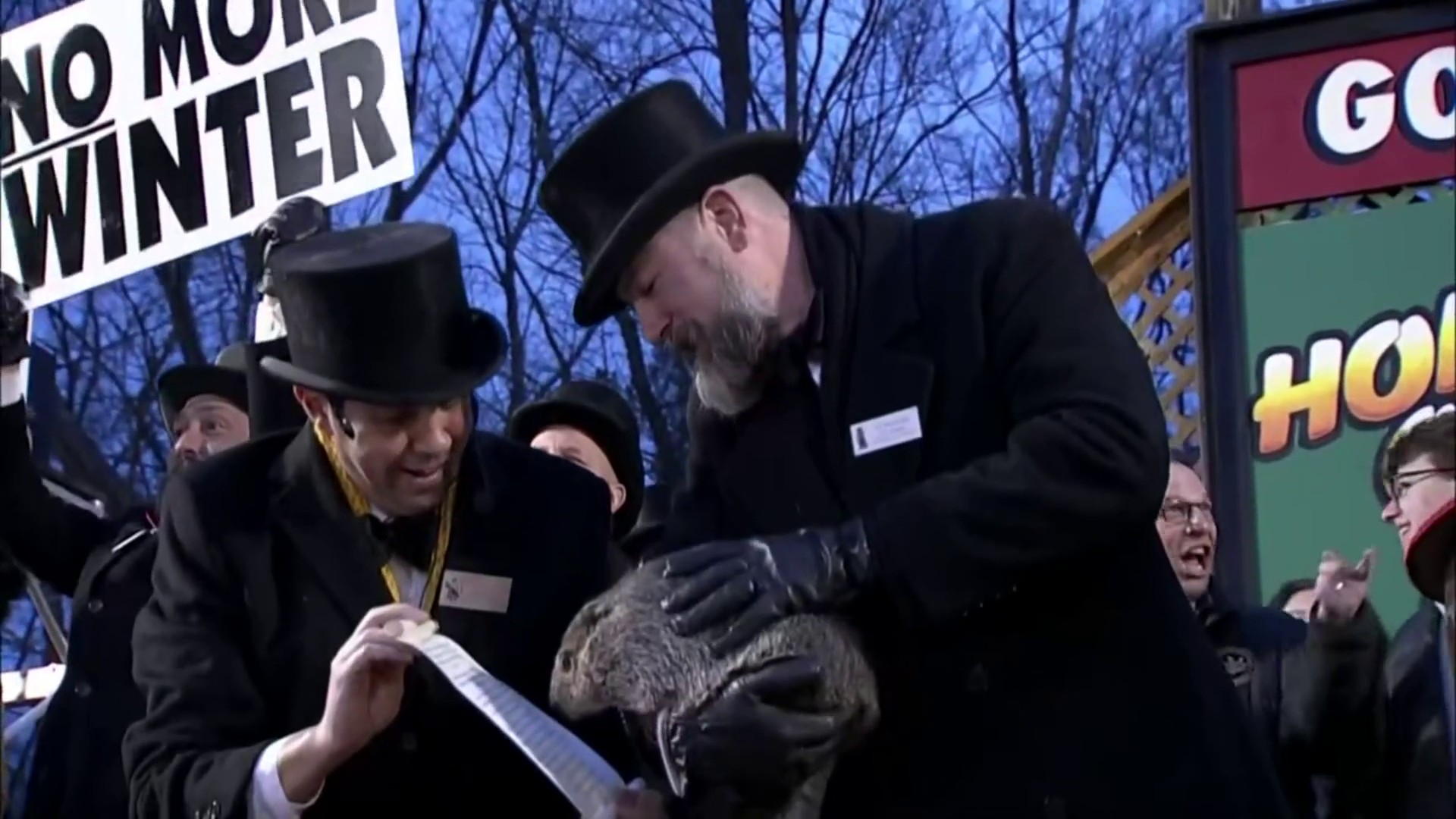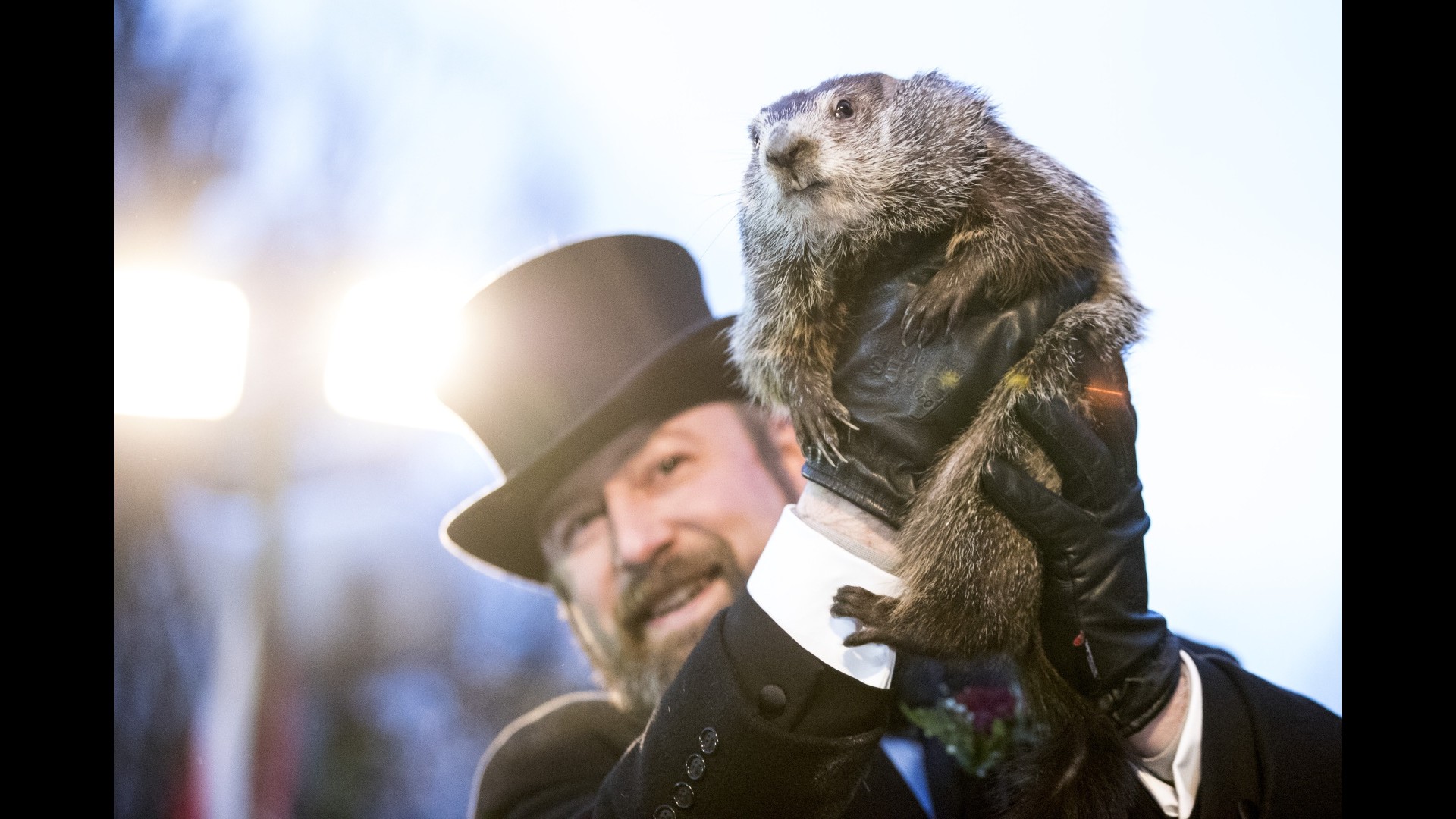What to Know
- A peculiar holiday in the beginning of February brings a myriad of people together and has as its main attraction an adorable, furry forecaster.
- Every Feb. 2, Punxsutawney Phil comes out of hibernation in Pennsylvania to let his shadow "do the talking." If his shadow appears, Americans are in for six more weeks of winter. If it doesn't spring will come early.
- It's a tradition that has stood the test of time, but how did it begin?
A peculiar holiday in the beginning of February brings a myriad of people together and has as its main attraction an adorable, furry forecaster.
Every Feb. 2, Punxsutawney Phil comes out of hibernation in Pennsylvania to let his shadow "do the talking." If his shadow appears, Americans are in for six more weeks of winter. If it doesn't, spring will come early.
It's a tradition that has stood the test of time, but how did it begin?
Get Tri-state area news and weather forecasts to your inbox. Sign up for NBC New York newsletters.
According to the Punxsutawney Groundhog Club -- a club with a little more than a dozen members who "protect and perpetuate the legend of the great weather-predicting groundhog Punxsutawney Phil" -- the holiday began as part of the Christian celebration of Candlemas Day in Europe.
The celebration was first observed in 350 AD and consisted of churchgoers taking their candles to church to have them blessed to bring blessings to their household for the remaining winter, according to The Punxsutawney Groundhog Club. As time passed, this celebration became entwined with weather prognostication.
According to the Library of Congress, Groundhog Day can be traced to even older holidays from pre-Christian times. In his 2003 book Groundhog Day, folklorist Don Yoder traces the roots of Groundhog Day to the same cycle of pre-Christian festivals that gave us Halloween and Mayday, the Library of Congress cites.
In the Irish folklore from the 11th century, "The Wooing of Emer," which is set in pre-Christian Ireland, the warrior Cuchulainn calls Imbolc “the beginning of Spring,” and believes that the name derives from an ancient word for sheep, according to the Library of Congress, which goes on to say that the story shows Imbolc was considered a seasonal turning point and a marker of time which was connected with the agrarian year and animal breeding and care.
The Library of Congress goes on to cite, The Encyclopedia of Irish Spirituality, as referencing the day of Imbolc, by describing it as follows:
"The day remains an agricultural festival. Farmers expect good weather for planting on Imbolc and fisherman traditionally overhauled their boats on this day. In traditional practice, there is divination to foretell the weather and family fortunes in the coming year."
Through time, Imbolc evolved to go by many names, including Candlemas, which is typically celebrated in many churches 40 days after Christmas. Because of this, weather prognostication became associated with the beginning of February.
Eventually, the celebration evolved away from candles and focused on animals.
That's when a hedgehog was introduced, The Punxsutawney Groundhog Club notes. According to German lore, if the hedgehog saw his shadow on Candlemas Day, there would be a long winter.
As German settlers journeyed to the United States, they found hedgehogs were hard to find and replaced the animal with a groundhog.
The first celebration of the new tradition took place in 1887 in Pennsylvania, according to the The Punxsutawney Groundhog Club.



